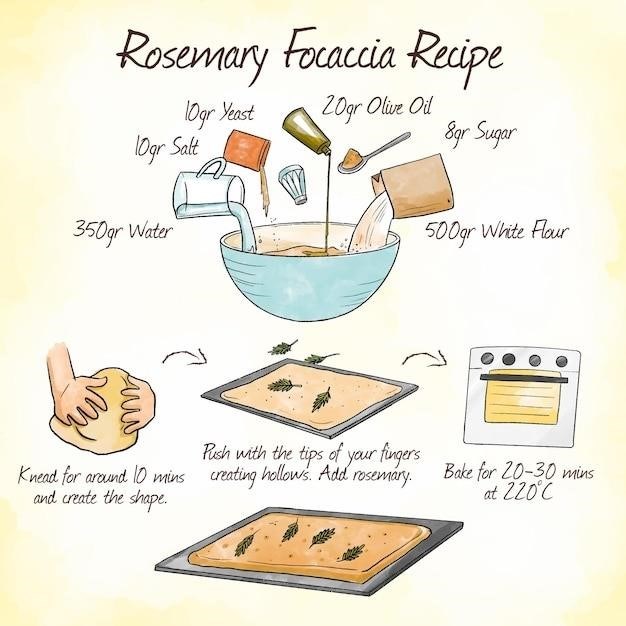Trader Joe’s Lasagna Cooking Instructions⁚ A Comprehensive Guide
This guide provides comprehensive instructions for cooking Trader Joe’s lasagna to perfection, covering oven and microwave methods. Learn optimal cooking times and temperatures, preparation steps, and tips for achieving either a crispy or softer top. Enjoy!
Oven Cooking Instructions
For optimal results when cooking Trader Joe’s lasagna in the oven, preheat your oven to 375°F (190°C). Remove the lasagna from its plastic packaging and place the tray on a baking sheet to catch any spills. This prevents messy oven cleanups. For a crispier top, bake uncovered. If you prefer a softer, cheesier top, loosely cover the tray with aluminum foil. Bake the lasagna, covered or uncovered, for approximately 40 minutes. After 40 minutes, check for doneness; the lasagna should be bubbly and heated through. If the top isn’t browned enough and you want a crispier finish, remove the foil (if used) and bake for an additional 5-10 minutes, keeping a close eye to prevent burning. Once cooked, let the lasagna rest for about 15 minutes before serving. This allows the cheese to set and makes for easier slicing. Enjoy your perfectly cooked Trader Joe’s lasagna!
Microwave Cooking Instructions
While oven cooking is recommended for optimal texture, microwaving Trader Joe’s lasagna is a quicker option for a smaller serving or when time is limited. However, be aware that the microwave method may not yield the same crispy top as oven baking. To microwave, remove the lasagna from its packaging. Place the tray on a microwave-safe plate to prevent spills. Microwave on high power for approximately 6 minutes. Let the lasagna stand in the microwave for 3-4 minutes after cooking. This allows the heat to distribute evenly and prevents burning your mouth. Check the internal temperature to ensure it reaches a safe temperature for consumption. The cooking time might need adjustment depending on your microwave’s wattage and the size of the lasagna portion. Always use caution when handling hot food removed from the microwave. Microwaving may result in a softer, less browned top. For best results, consider a combination method – microwave for a shorter time, then briefly broil in the oven for a crispier top, if desired.
Cooking Time and Temperature
Cooking times and temperatures for Trader Joe’s lasagna vary depending on the cooking method and whether you’re starting from frozen. For oven cooking, preheat your oven to 375°F (190°C). If cooking from frozen, cover the lasagna with foil and bake for approximately 1 hour and 10 minutes. For a crispier top, remove the foil during the last 15-20 minutes of cooking. If cooking a thawed lasagna, reduce the cooking time, covering for approximately 40 minutes, then removing the foil for an additional 5-10 minutes to achieve a golden brown and bubbly top. Always check for doneness by ensuring the internal temperature reaches a safe level. Microwave cooking times are significantly shorter. Aim for approximately 6 minutes on high power, followed by a 3-4 minute standing time. However, microwave cooking may not result in the same browning and crispness as oven cooking. Remember that microwave wattages vary, so you might need to adjust cooking times accordingly. Always refer to the specific instructions on your Trader Joe’s lasagna packaging for the most accurate cooking times and temperatures for your specific product. Overcooking can lead to a dry lasagna, while undercooking poses food safety risks.
Preparation Before Cooking
Before embarking on the culinary journey of preparing your Trader Joe’s lasagna, several preliminary steps are crucial for achieving optimal results. First, carefully remove the lasagna from its packaging. If cooking from frozen, ensure it remains frozen until ready to cook to prevent uneven heating and potential food safety issues. Next, decide on your cooking method⁚ oven or microwave. For oven cooking, position the lasagna on a baking sheet to catch any potential spills or drips during the cooking process, protecting your oven from unnecessary cleaning. This precaution is especially important when cooking from frozen. If using the microwave method, select an appropriate microwave-safe dish large enough to comfortably accommodate the lasagna tray. For both methods, note that no thawing is required if you’re cooking from frozen; however, for a thawed lasagna, you’ll need to adjust cooking times accordingly. While many sources suggest removing the plastic wrap before cooking, always check the package instructions as some may advise leaving it on. Regardless of your chosen cooking method, prepping your oven or microwave beforehand will save time and prevent delays in enjoying your delicious meal. Remember to preheat your oven if using that method and make sure your microwave is clean.
Tips for a Crispy Top
Achieving a perfectly crispy top on your Trader Joe’s lasagna is a matter of technique and attention to detail. The key lies in maximizing exposure to the oven’s heat. To ensure a beautifully browned and crunchy top layer, avoid covering the lasagna with foil during baking. This allows the cheese and top layer of sauce to properly brown and crisp. For even crispier results, consider broiling the lasagna for the last few minutes of cooking. Keep a close eye on it during broiling to prevent burning. However, the broiling time will vary depending on your oven, so start with a short period and check frequently. Another helpful tip is to increase oven temperature slightly during the final stages of cooking—though it is crucial to always adhere to the recommended cooking temperature range found on the lasagna packaging. For best results, use an oven that provides even heat distribution throughout. If you notice the edges browning too quickly, you might consider shielding them with aluminum foil briefly. Remember to let the lasagna rest for a few minutes after cooking to allow the cheese to set and prevent a soggy top. This short rest period helps to maintain the crispiness.
Tips for a Softer Top
If you prefer a softer, more tender top layer on your Trader Joe’s lasagna, rather than a crispy one, a few simple techniques can achieve this. The key is to prevent the top from drying out and browning excessively. Covering the lasagna with aluminum foil during most of the baking time is the most effective method. The foil creates a barrier that traps moisture, preventing the top layer from becoming too crisp. Start by preheating your oven to the temperature specified on the package instructions. Then, carefully place the uncovered lasagna into the preheated oven. After about 20-25 minutes of baking, cover the lasagna tightly with aluminum foil. This ensures even cooking and prevents the top from drying out while the inside reaches the desired temperature. Continue baking according to the package instructions, or until the internal temperature reaches 165°F (74°C). Once the lasagna is cooked through, carefully remove the foil and allow the lasagna to rest for a few minutes before serving. This resting period will allow the heat to distribute evenly, resulting in a consistently soft and moist top layer. Avoid opening the oven door frequently, as this can cause temperature fluctuations and affect the overall texture.
Serving Suggestions
Trader Joe’s lasagna, whether oven-baked or microwaved, is incredibly versatile and pairs well with a variety of sides and accompaniments. For a classic Italian-inspired meal, serve it alongside a simple side salad of mixed greens, cherry tomatoes, and a light vinaigrette. The contrasting textures and flavors complement the richness of the lasagna beautifully. A crusty Italian bread, lightly brushed with olive oil and herbs, is another excellent addition, perfect for soaking up the delicious sauce. For a heartier meal, consider serving the lasagna with a side of roasted vegetables, such as asparagus, broccoli, or zucchini. Their slightly bitter notes provide a nice counterpoint to the creamy, cheesy lasagna. If you prefer a lighter side, a fresh Caprese salad with slices of ripe tomato, fresh mozzarella, and basil would be a refreshing and elegant complement. For a more substantial meal, consider serving your lasagna with a side of garlic bread or even some simple sauteed greens. Don’t forget the parmesan cheese! A sprinkle of freshly grated parmesan cheese adds an extra layer of flavor and texture. Ultimately, the best serving suggestions depend on your personal preferences; however, these options provide a solid starting point for creating a truly satisfying and delicious meal.
Storage of Leftovers

Proper storage of leftover Trader Joe’s lasagna is crucial to maintaining its quality and preventing spoilage. For optimal freshness, allow the lasagna to cool completely before storing. This prevents condensation from forming, which can make the lasagna soggy. Once cooled, transfer the lasagna to an airtight container. A glass or plastic container with a tight-fitting lid is ideal. Avoid using aluminum foil, as it can react with the acidic ingredients in the lasagna, potentially altering the flavor. For short-term storage (up to 3 days), refrigerate the lasagna. Ensure the container is securely sealed to prevent odors from transferring to other foods in the refrigerator. For longer storage (up to 3 months), freeze the lasagna. Portion the lasagna into individual serving sizes or freezer-safe containers before freezing to make reheating easier. To freeze, wrap the lasagna tightly in plastic wrap, then place it in a freezer-safe bag or container to further prevent freezer burn. When reheating frozen lasagna, ensure it is thoroughly heated to an internal temperature of 165°F (74°C) to eliminate any potential foodborne pathogens. Reheating methods vary depending on whether it was previously refrigerated or frozen; refer to the reheating section of the instructions for your preferred method.
Nutritional Information
The nutritional content of Trader Joe’s lasagna varies depending on the specific variety (meat, vegetarian, etc.) and serving size. However, general nutritional information can be found on the product packaging. Expect a high calorie count due to the cheese, meat (if applicable), and pasta. The calorie count will likely range from 300-400 calories per serving, though this is an estimate and should be verified on the packaging. Fat content will also be significant, primarily from the cheese and meat. Sodium content is usually quite high in processed lasagna, so be mindful of your daily sodium intake if you have health concerns. The lasagna will contain carbohydrates primarily from the pasta and sauce. Protein content will vary depending on the presence of meat; meat varieties will offer a higher protein content than vegetarian options. Fiber content will be relatively low, primarily coming from the tomato sauce and small amounts in the pasta. While specific vitamin and mineral content varies, expect some vitamins A and C from the tomato sauce, and some calcium from the cheese; Always check the product label for the most accurate and up-to-date nutritional information, as formulations may change. Remember that nutritional information represents a single serving; adjust accordingly based on the portion size you consume.
Ingredients List
Trader Joe’s lasagna ingredient lists vary slightly depending on the specific type (e.g., meat, vegetarian). However, common ingredients across their lasagna offerings generally include pasta (likely enriched wheat), a meat sauce (if a meat lasagna), various cheeses (such as ricotta, mozzarella, and parmesan), and vegetables (onions, garlic, and possibly others). Meat lasagnas typically contain beef and/or pork. The sauce usually consists of tomatoes, tomato paste, and various seasonings. The exact blend of spices and herbs can vary, but expect common Italian seasonings like oregano, basil, and possibly others. Some versions may include additional vegetables beyond the basic onions and garlic. There may also be added ingredients such as egg, milk solids, and various flavor enhancers. It is important to note that Trader Joe’s recipes may change over time, so the ingredients list on your specific package should be considered the definitive source. For those with allergies or dietary restrictions, carefully review the ingredients list on the packaging for potential allergens such as wheat, dairy, soy, or eggs. The presence of these allergens will vary based on the lasagna variety. Always check for any potential allergens before consumption, especially if you have a known sensitivity.
Comparison to Other Brands
Trader Joe’s lasagna occupies a unique space in the frozen food aisle. Compared to mass-market brands like Stouffer’s, it often receives praise for a more flavorful sauce and a higher meat-to-noodle ratio, though some find the cheese content slightly less abundant. While lacking the sheer size of some Costco options, its smaller tray makes it ideal for smaller households or couples. Many online reviews suggest Trader Joe’s lasagna offers a superior taste profile, often described as closer to homemade than its competitors. However, direct comparisons are subjective, hinging on individual preferences for sauce consistency, cheese type, meat content, and overall seasoning. Some consumers may prefer the bolder flavors of other brands, while others find Trader Joe’s more refined. Price-wise, Trader Joe’s generally falls within the mid-range of frozen lasagnas, providing a balance between cost and perceived quality. The ultimate choice often depends on personal taste and budget, with no single “best” brand universally agreed upon. Taste tests and individual reviews offer a diverse range of opinions, highlighting the subjective nature of frozen food comparisons.
Troubleshooting Common Issues
Overcooked lasagna is a common problem; if the top is overly browned but the inside remains cold, try reducing oven temperature or covering the dish with foil during the later stages of baking. Conversely, if the lasagna is undercooked and the center is cold, increase cooking time and/or temperature, ensuring the internal temperature reaches a safe level. A soggy bottom might indicate insufficient drainage; using a baking sheet to catch spills can help, but ensure the lasagna isn’t directly sitting in excess liquid. If the cheese is not sufficiently melted and bubbly, a longer cooking time at the recommended temperature might be necessary. Uneven cooking often points to an improperly preheated oven or uneven heat distribution within the oven itself. Rotating the lasagna halfway through cooking can mitigate this. If the lasagna is too dry, consider adding a tablespoon or two of water or broth to the bottom of the baking dish before cooking. Finally, remember never to thaw frozen lasagna at room temperature; always cook it from frozen to maintain food safety.
Reviews and Ratings
Trader Joe’s lasagna receives mixed reviews, with many praising its convenience and ease of preparation. Many reviewers describe the flavor as “good” or “acceptable,” comparing it favorably to other frozen options but acknowledging that it doesn’t quite match homemade lasagna. Common positive comments highlight the generous amount of cheese and the satisfying meat sauce. Some find the overall flavor profile to be a bit bland, suggesting adding spices or fresh herbs to enhance it. The portion size is often noted as appropriate for two people rather than the advertised four, depending on appetite. Several reviews mention the lasagna’s success as a quick weeknight meal, particularly when complemented with a side salad. While many appreciate the ease and affordability, some customers express a desire for more cheese or a richer sauce. Overall, online ratings and reviews suggest Trader Joe’s lasagna is a convenient and decent frozen option, particularly for those seeking a less time-consuming alternative to homemade lasagna, but not a replacement for a truly high-end culinary experience.






